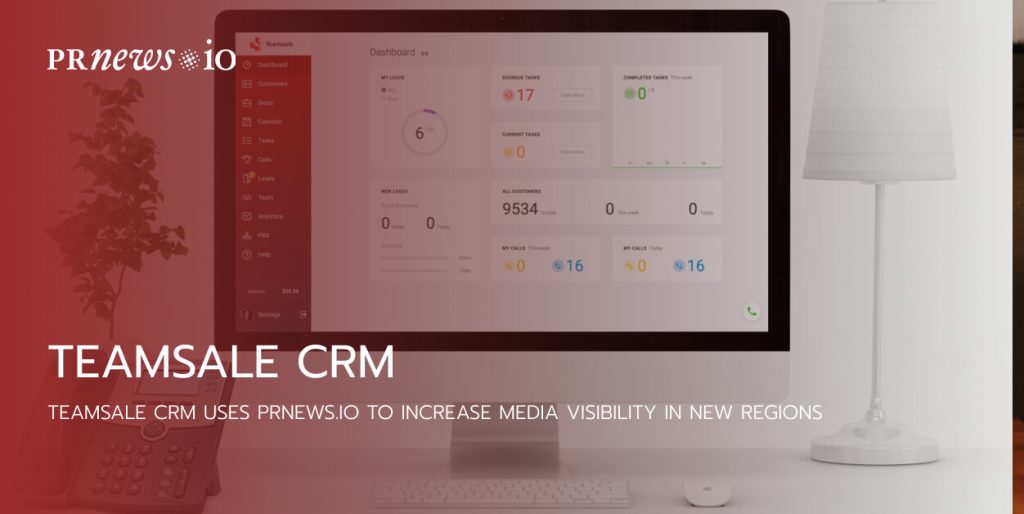We all know the reason that changed the rules of doing business. Some communication channels are already history because they do not work for good. At the same time, others have become the best practices to follow. And a healthy mixture of both is the way to go about things.
Without much warning, that was the pandemic that turned the business landscape utterly upside down. And what used to work once has wreaked havoc, facing communication and information lapses.
Those changes were so huge that they would normally have taken years to implement. As a result, businesses had to consolidate those changes to reevaluate and rethink their values quickly.
If we check the numbers, we see that 86 percent of employees and executives cite the lack of effective collaboration and communication. That means that not all businesses have coped with the task. But those that adapted to those changes are close to increasing their productivity by as much as 25 percent.
Content Marketing Platform
- 100,000+ media publications;
- get backlinks to your product;
- scale work with content distribution.
Common Communication Channels and Their Distinction
In general, you can use formal or informal, official or unofficial communication channels. The best part is that you can mix them.
A formal channel might be the comment feature in Google Docs or email. Instead, informal can be a quick face-to-face conversation or a short phone talk between two product designers during the lunch break.
Official channels include team chat app, email, or face-to-face meetings daily, to name a few. Unofficial ones offer the same tools that are not used every day. For example, your company uses Zoom as an official video chat app. Yet, to connect with product designers who work remotely, your team uses Google Meet.
The Best Communication Channels for Business
Still, think that social media is one of the best channels of communication? Then think again. Efficient communication is much more than that. When you think about your customers first, you’ll be able to find the silver lining that fits both you and your customers.
According to Statista, almost five in 10 respondents (46%) prefer email as one of the best communication channels in business. For 25 percent of respondents, SMS and WhatsApp are the favored communication channels, while 12 claim Facebook Messenger is their first choice. The next preferred channel of communication for business is phone calls. It’s used by 24 percent of respondents. And social platforms such as Instagram and TikTok are traditional channels for around 10 percent of respondents.
Email Newsletters are Hot Like Never
It’s safe to say that email newsletters are back in style. Although it’s not a new technology, it takes center stage in the customer experience. You can schedule meetings, write updates, newsletters, share links, and much more. The best way to use it is when you need to record that conversation—or the files shared in that thread. Face it, some private, subscription-based platforms like Patreon and TinyLetter work just for writers.
Email remains one of the best and most popular written communication channels. Why? Because it can help build a more personal relationship with the readers.
Social Media
It’s hard to deny, 2020 was massive for social media. The world was forced into lockdown; so, the usage of social media skyrocketed. And businesses rely on influencers to increase their reach and brand loyalty.
But the thing is that social media is the least personalized channel of communication. Let’s see why. When you want to buy, say, a car, would you do it just by enjoying a post on Facebook or Instagram? Chances are, you do as most people do – talk with a professional salesperson. That’s the problem. Phone and in-person conversations have the smallest reach, but what they do – they offer the most personalized experience.
Of course, the uniqueness of your business helps you prioritize the list of communication channels that work for it best. Anyway, to help your social media profile serve you, it’s smart to implement a live chat feature. As data shows, 82 percent of customers prefer this sort of communication over others. And only 44 percent will use the landline phone service to do business.
Next, every single social media outlet is vastly different. Each platform has its demographics and concepts. And when you know who is your ideal audience, you know where they are.
Phone Calls
Think wireless business phone is old-fashioned? Well, phone calls aren’t dead. And 25 percent of users claim it as the top preferred communication channel. It is a great go-to formal channel best used for urgent or important conversations. First, it’s an ideal option for less tech-savvy customers. Next, it lets you get detailed answers to your questions and easily ask follow-up questions. As a result, you get into a more natural conversation. And you don’t have to wait for a few minutes to get the answers. So, phone calls are not going away soon.
Text Messaging/SMS
Some sales prefer text messaging because 57% of people like to use instant messaging platforms. And also, they respond faster over text. Almost 60% of consumers reply back to a text message within 1-2 minutes on average. Some folks are just more responsive to business messages than phone calls. So, if your customers are uncomfortable with the latter, offer them options. And you see a better result for a lot more customers.
Alone, SMS is a powerful engagement tool that allows businesses to send concise, timely messages to their customers. Moreover, they can still expect a quick response. Like email, text messaging needs to be used at the right time and in the right case. Of course, if you want to improve both consumer trust and the ROI of business messaging.
Video Calls
Remember the volume of video calls we had at the beginning of the pandemic? It was overwhelming at first. Today, businesses use this channel as the new normal. The nice thing today is that you don’t have to physically be in the same room as someone to have a face-to-face conversation with them.
Video calling or online conferencing services is the first choice for 81% of adults working from home at least part-time. With all the challenges, online communication comes with benefits. The meetings are more likely to be shorter. Time is money for many people, so it’s a way to stop beating around the bush. Will we return to the live venue socialization? The question is still open.
In-Person Communication
Although 71% of managers agree that most meetings are inefficient, it’s still one of the richest communication channels around. The reason? This means it is much more personal. It’s also one of the effective ways to connect to business. It reduces any misconstrued messages. And creates the most valuable long-term connections.
Written Skills
Even if your business is not global, knowing at least one international business language is necessary today. By way of example, English is not the official language of the US. Surprised? Yet, 78.1 percent of the US population speaks English as their mother tongue. And Spanish is the first language most students opt to learn.
Embrace Changes
The media marketplace is more crowded than ever. The pandemic shed light on the importance of different channels of communication in doing business. Moreover, that trend will show no sign of a slowdown in the next year. Doing business in today’s digital world means you have no borders. Yet, this task becomes more and more challenging. Unless you have in-depth knowledge of the media marketplaces, you get your message out.
Embrace the fact that customers have changed. The good news is that the good folks in marketing can help you. PRNews.io service can offer cross-border reach to position your stories or news on your terms. People favor high-quality, attractive content, so get your message across. As such, a little help from PRNews.io professionals never hurts. When you’re aware of getting the best results, an omnichannel strategy is your best ally. If you want to expand your footprints and reach media beyond your local market, get in touch with us.
Communication Channels FAQ
What are the channels of communication?
Channels of communication are any means we use to share information. Think of those as ways that make it easier for you to inform, communicate, share information, ask questions, or provide answers to questions. That could be phone calls, text messages, emails, video, radio, and social media. That’s what enables people to stay in touch.
Read more:





